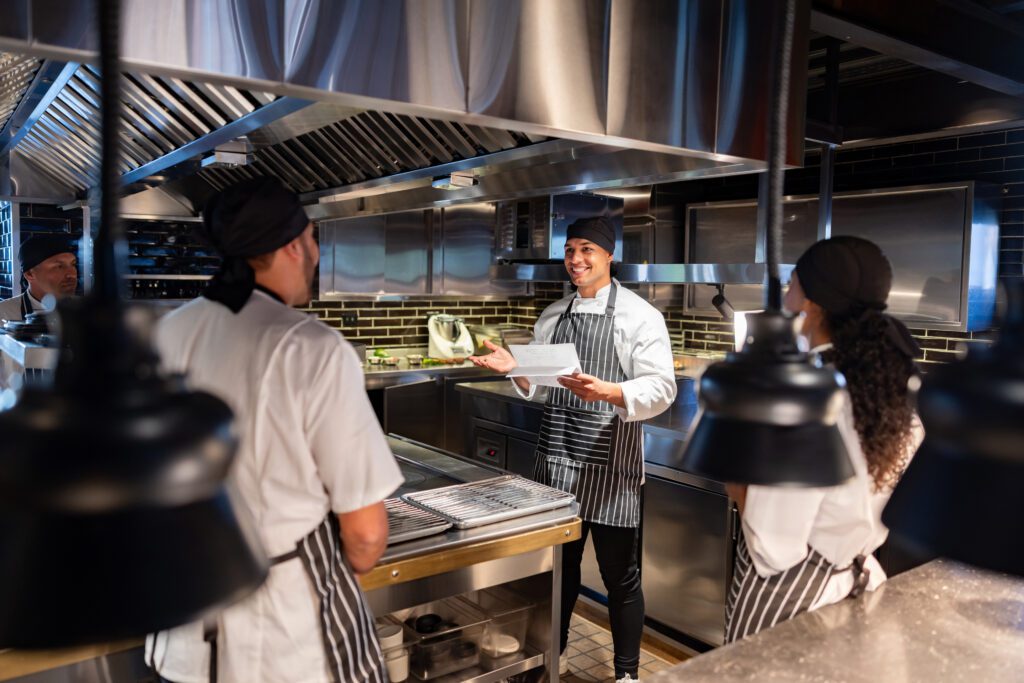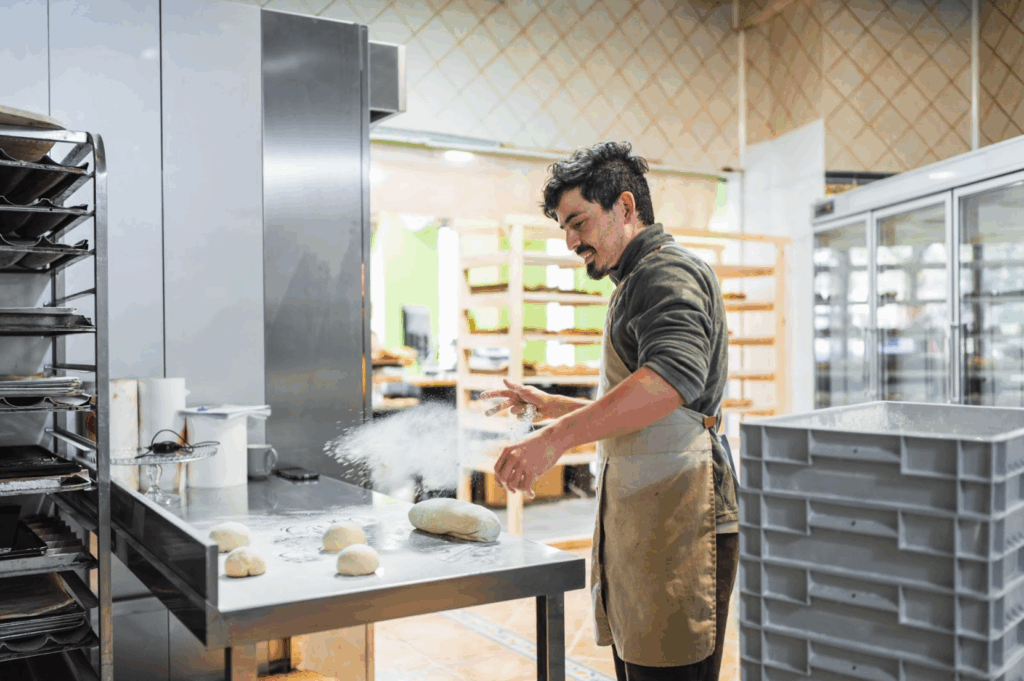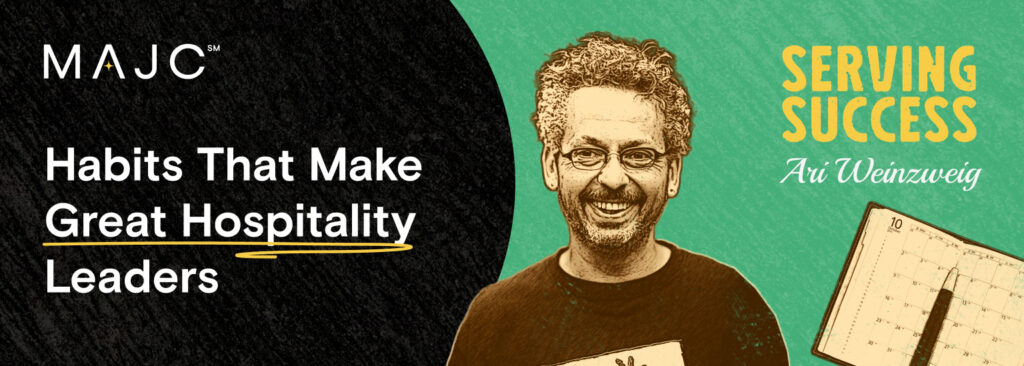The Art of the Pre-Shift: How to Set the Tone for a Strong Service

An effective pre-shift is a chance to align your team, share purpose, and set the tone for every guest experience.
Running a restaurant is like conducting an orchestra. If the team isn’t aligned before the first note, the whole performance suffers. Too often, pre-shift meetings are rushed, skipped, or reduced to a laundry list of 86’d items. The result is confusion, missed opportunities, and a team that starts service reactive instead of ready.
A strong pre-shift changes everything. It brings the room together, sharpens focus, and reminds the team why they’re here. Restaurateur, author, and hospitality expert Will Guidara told Nation’s Restaurant News that pre-shift is “the most important 30 minutes of the entire day.” Done right, it’s where culture, communication, and guest experience take root, before the first guest even sits down.
At MAJC, we’ve interviewed close to one hundred successful chefs and owner-operators on our podcasts Restaurant Ready and Serving Success. The lessons here come straight from those conversations. We typically highlight only the chefs and operators we’ve interviewed, but Guidara is one of hospitality’s most influential voices, and his perspective on pre-shift is too valuable not to include here.
1. Align Before the Doors Open
Pre-shift is where teams align on what matters most: specials, 86’d items, large parties, and service goals. Without it, service starts reactive. Chicago restaurateur Kevin Boehm emphasizes that if a team isn’t clear on expectations before service, they’re being set up to fail, and that consistency in communication is the foundation of culture.
Takeaway: Alignment builds confidence and keeps the whole room moving in the same direction.
2. Keep It Short, Structured, and Consistent
Pre-shift doesn’t have to be long to be powerful. Ten minutes is enough if you use a repeatable structure: logistics, priorities, and one focus for guest experience. Guidara emphasizes that pre-shift should inspire as much as it informs, not just reading off specials, but energizing the team. Chef Gavin Kaysen stresses that consistency of showing up as a leader builds trust, and even a few minutes together before service can shift the tone of the night.
Takeaway: A short, structured pre-shift creates rhythm and reliability.
Try This: Pre-Shift Energy Check-In
How you show up matters. When leadership expert Taylor Scott was interviewed on Serving Success, he shared that energy is contagious. Whether you realize it or not, your team mirrors what you bring into the room. Use this one-minute check-in before leading pre-shift to reset your mindset and lead with intention:
- Ask yourself: How am I feeling right now? Calm, rushed, distracted, focused?
- Check your energy: What tone am I bringing into the room—steady, short-tempered, uplifting?
- Reset quickly: Take a breath, adjust your posture, slow your pace, and shift your internal script from “This is a mess” to “We’ve got this.”
- Set intention: What tone do I want to set for the team? Who might need a boost today?
Even 60 seconds of self-awareness can change the way you lead a pre-shift, and how your team shows up for guests.
3. Use Storytelling to Elevate Service
Pre-shift is a chance to connect staff with the why behind the food. Sharing the story behind a dish, a farmer, or a tradition equips your staff to connect with guests in a more meaningful way.
Chef Yia Vang says, “Menus aren’t just recipes. They’re stories of identity and memory. When your team understands that, they serve with purpose. Chef Maria Mazon often reminds her team that pre-shift is where empathy begins, helping staff feel what the guest should feel.
Takeaway: A story told in pre-shift often becomes the story a guest remembers at the table.
4. Build Culture in the Moment
For some chefs, pre-shift is the only time the whole team stands shoulder to shoulder. It’s a chance to connect as people, not just coworkers. Guidara often highlights using pre-shift to celebrate wins, recognizing a server for an exceptional moment of hospitality, or a cook for a creative contribution. This reinforces culture in a way that lasts far beyond the shift.
Chef Manu Buffara says, “Pre-meal is not just information. It’s community. We talk, we listen, we remember why we are here together before the stress begins.” Chef Ben Shewry believes, “If you treat pre-meal as sacred time, it becomes a ritual. It tells your team: you matter, and we’re in this together.”
Takeaway: Treat pre-shift as a ritual that builds trust and belonging.
5. Don’t Skip It When It’s Hard
The busiest nights are when pre-shift matters most. When things feel rushed, it’s tempting to blow past it, but skipping pre-shift sends the message that clarity and culture are optional. Chef Chris Shepherd says, “Your team is watching you. If you make time to set expectations every day, they’ll take it seriously. If you don’t, they won’t.”
Takeaway: Consistency in pre-shift builds credibility and steadies the team when pressure rises.
Bottom Line
Pre-shift is more than a meeting. It is alignment, inspiration, and culture rolled into ten minutes. It sets the tone for everything that follows. Buffara and Shewry remind us it’s where community is built. And leaders like Boehm, Kaysen, and Shepherd show that clarity and consistency are what make it last.
Whether you run a small bistro or a multi-unit group, the lesson is the same: treat pre-shift as sacred, and your restaurant will run smoother, your team will feel stronger, and your guests will notice the difference.
Pre-shift is just one piece of running a smoother restaurant. Inside the MAJC Community, you’ll find checklists, templates, and live conversations with chefs and operators who’ve been there. Come be part of it.
At MAJC, AI helps us organize thoughts and speed up workflows, but every article is shaped, refined, and approved by real people who live and breathe this industry. We think honesty (like hospitality) works best when it’s real.


